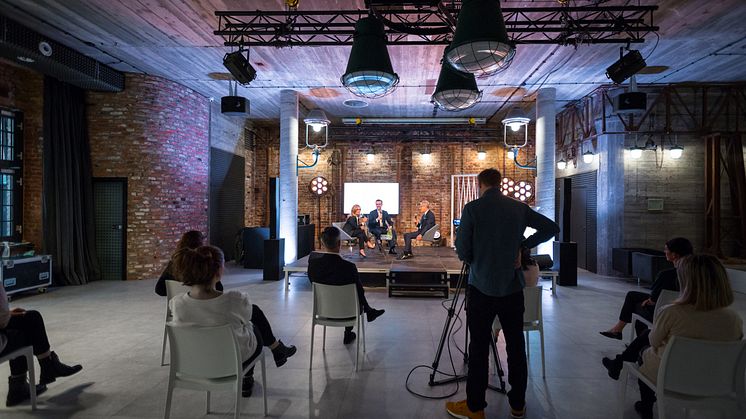
Blog post -
How to overcome three problems unique to hybrid events
So, you're now heading into hybrid events and you think you've got it down pat. After all, last year you went from a physical, in-person environment to host events online and while it took some time to adjust, you got there in the end.
Next stop: hybrid.
What could be so hard, right?
Unfortunately, hybrid events are not just a matter of throwing together all the aspects of physical and virtual events into one.
Here are three key points you must get right:
- Technology
Your virtual audience should have the same experience as the audience in the room with you.
Obvious as it sounds, you will find this is surprisingly difficult.
For example, can your virtual audience see the videos you are playing out on the projection screen in the seminar room? And hear them, too?
Or perhaps you are sharing your screen with your virtual audience. Can your in-person audience see your slides, too?
Or are you finding you are projecting your PowerPoint presentation to your physical audience, but your online audience can only see "presenter view"?
Also, wear a proper microphone so that not only people in the physical space can hear you, but your online audience as well.
It all sounds easy, but you will soon experience how difficult this is when issues such as muted mics or audio feedback arise.
There is lots of technical work to be done to ensure the experience for your two audiences is as aligned as possible. You may not be able to serve your online audience coffee like you do your in-person audience, but the least you must do is make sure the technology works.
- Interactivity
Interactivity is most important to attain, retain and regain audience attention, yet it is not as easy to conduct as you might think.
Your participants in the seminar room can raise their hands and ask you a question at any time. But what about your online audience?
Can you even hear them?
Let's say, for example, you allow everybody online to unmute so you can hear them. But then somebody online starts typing, or there is some sort of disturbance, such as dogs barking, children squealing, planes flying overhead, and so on. That is going to prove hugely distracting to everyone, not least your in-person audience.
But if you ask your online audience to mute themselves, they are even more disconnected from you than before.
Can your virtual audience interact with you, ask questions, or take part in polls?
You might ask participants in the seminar room to give a show of hands. How is your virtual audience going to take part in that? Sure, Zoom and Microsoft Teams have 'raise hand' functions, but do you have the mental bandwidth to commentate them both?
Using interactivity tools such as SparkUp, Slido, Mentimeter and others, is essential so all participants - both virtual and physical - can participate.
- Empathy
As a presenter, you must show a great deal of empathy for both your audiences.
Your virtual audience is at a disadvantage because you are unable to make eye contact with them, in the same way you can look into the faces of attendees in the seminar room with you.
You must make an extra effort to interact with virtual audience members, and ensure they feel they are part of the event.
The difficulty is that no matter which audience you are focusing on, the other audience will feel left out.
Look into the camera to make eye contact with your virtual audience and your physical audience will wonder what's going on, but make eye contact with your physical audience and your virtual audience will feel excluded.
You or your presenters must be aware of the difficulties of speaking to both in-person and virtual audiences.
The bottom line is, if you leave them out they will tune you out.
You've come this far...
If you're interested in learning how to master virtual- and hybrid events, click here to sign up for our course "How to present hybrid events like a pro".

